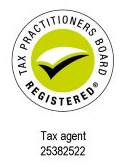Depreciation is basically a reduction in the value of an asset over time. What this means for your business is that if you buy a substantial asset like a computer or a car, you can claim a certain amount of the loss of value over time as a business expense.
It’s important that your business claims the maximum tax advantage from depreciation. It’s a bit like claiming expenses, only you’re claiming just the depreciation amount, not the total cost of the asset. But there’s more to depreciation than just a tax claim, and you need to know how to calculate it as well.
Calculating depreciation
There are two main methods:
- Straight Line Depreciation
This is when you calculate the depreciation of an item based on the original cost price of the item. You claim the same amount each year. - Diminishing Value Depreciation
This allows you to calculate the depreciation cost on the diminishing value of the car, so the amount you claim each year will vary as the value item decreases.
You don’t have to use the same method for all your assets, but you must use the same method on an asset throughout the financial year. There are also special depreciation rules which change from time to time so it is important that you seek advice from a qualified accountant.
What depreciates and what doesn’t?
You can’t claim a tax deduction for depreciation on all of your assets. Only those that are for business use can be depreciated and the value and life expectancy affect whether they qualify and you can’t claim a deduction for assets like stock and intangible assets like goodwill so check with your accountant.
Record keeping
It’s really important that all your financial records are kept up to date for many reasons, one of them being the ability to claim tax for depreciation. Most businesses leave this to their accountants, but it’s still important to understand what the schedules need to show:
- Fixed assets, including proof of purchase.
- The depreciation claimed.
- The adjusted tax value of each asset.
- A compliant invoice.
Selling assets
At the same time that you tell your accountant about the assets bought during a financial year, you should also supply a list of assets sold during the year, including the date of sale and the sale price.
If you get more for an asset than its depreciated value, you’ll pay tax on the difference. If you get less, you can claim the difference as a loss.
Additional tips
There are some additional factors that can have an impact on a small business, such as:
- Include depreciation in your costings – assets don’t last forever, and the depreciation is a cost to your business. So build in the depreciation expense into the costings of your products and services.
- Depreciation’s calculated on a monthly basis – you can only claim depreciation on the number of months that the asset was actually productive in your business.
- You can only claim once the asset becomes productive – let’s say you order a piece of equipment from overseas. It takes three months to arrive, plus another month to be installed and set up. You can’t claim for these 4 months. Depreciation starts only when the equipment is actually working.
Summary
What you’re looking to do is fully understand how depreciation works, so that you can maximize your tax benefits. Your accountant or tax agent will take care of this for you, but it’s still important to understand how it works.









